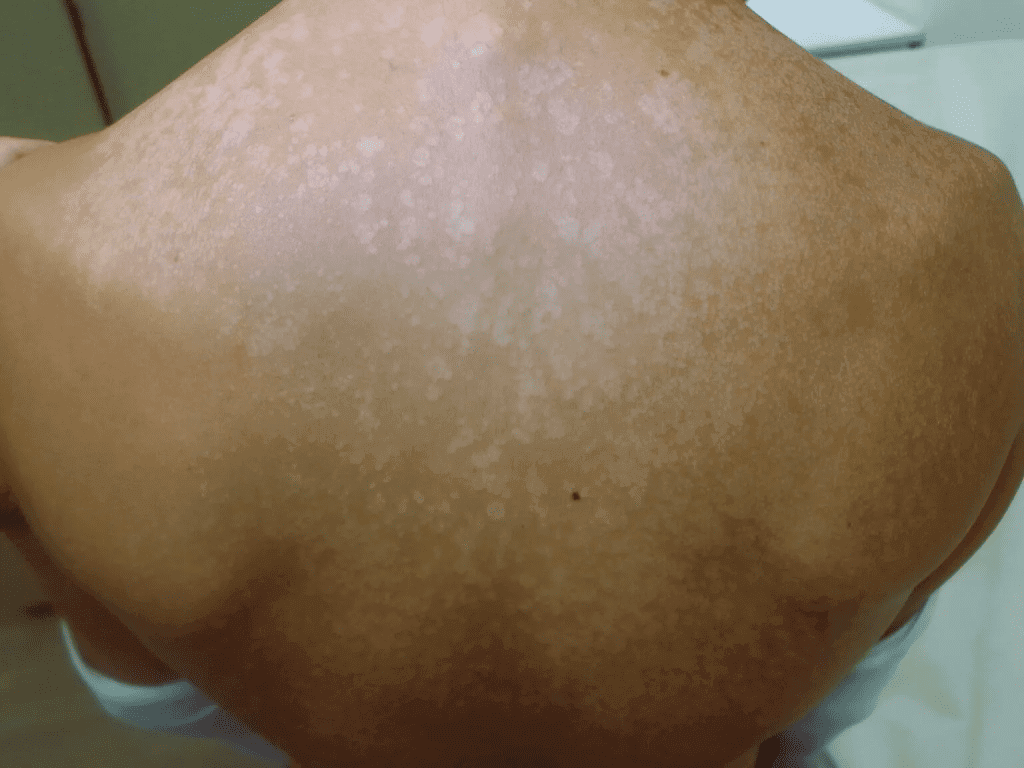
Everything you need to know about sun fungus (pityriasis versicolor) in children and adults
Sun fungus, or pityriasis versicolor (the proper medical term for the condition), is a common skin condition that is quite harmless (except for the cosmetic effect). It is caused by a fungal infection and manifests as uneven skin pigments with soft scaling that typically involve the chest and back.
This nice little post was written by the one and only Professor Danny Ben Amitai, our mythological pediatric dermatologists, and you can find out more about him here.
Where does the term “sun fungus” and “pityriasis versicolor” originate from?
Pityriasis means soft scaling, and versicolor refers to the different colours characteristic of the condition.
Why is it also referred to as sun fungus? This is because the regions where the fungal infection thrives do not tan like other, non-affected skin areas.
What is the name of the fungus that causes the infection?
This fungal infection is caused by a fungus called Malassezia, which is part of the normal flora (the organisms naturally found on our skin), of bacteria and fungi that reside on the skin of most people. In some people, this fungus multiplies and causes pityriasis versicolor. The reason for why this happens is unknown.
Who is more prone to developing this condition? When does it most frequently occur?
This condition is more common in adolescents and young adults but can also appear in younger children. It occurs most frequently in the warm and humid seasons. It is more common in boys than in girls, and a tendency to sweat presents a risk factor.
Where in the body does this condition most commonly appear and what are the accompanying symptoms?
It most commonly appears on the trunk, neck and arms. It does not usually have any accompanying symptoms except for occasional itching.
How can sun fungus or pityriasis versicolor be diagnosed?
The diagnosis is made through clinical observation. There is no need for any additional tests or labs.
What is the treatment for sun fungus or pityriasis versicolor?
In mild conditions, treatment with topical anti-fungal cream is usually sufficient. The cream is to be applied for several days to weeks, depending on the number of patches present.
In more severe conditions when the rash is more extensively spread, or if the topical creams are not helpful, an oral anti-fungal may be used for treatment.
Keep in mind that even when the treatment is successful, it is impossible to completely get rid of the fungus as it is part of the skin’s normal flora, so the infection does tend to recur, especially in warm and humid season. Sometimes, the oral treatment must be repeated.
In summary, this is a common condition in pediatrics, especially in adolescents. The diagnosis and treatment are easy.
Good luck!
For comments and questions, please register
